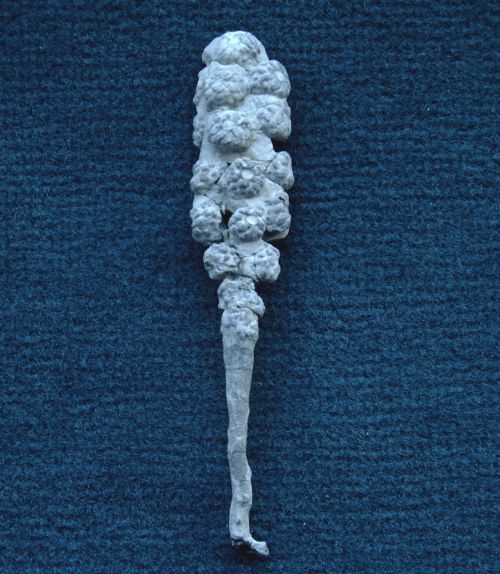
Polyblastidium racemosum
T. Smith 1848
Polyblastidium racemosum is a rare and peculiar lychniskide sponge. It is somewhat more common in the Lower Campanian of Höver than in the Upper Campanian.
The sponge has bud-like, hollow tubes projecting outward from a central stem. Bud-formation begins with small tuberculate groups on the stem, which increase in size and form fully developed buds further up the central stem. The bud walls have a radially folded appearence. The grooves appear to develop from aporhyses (? direction of water flow uncertain) located on the sides of the buds.

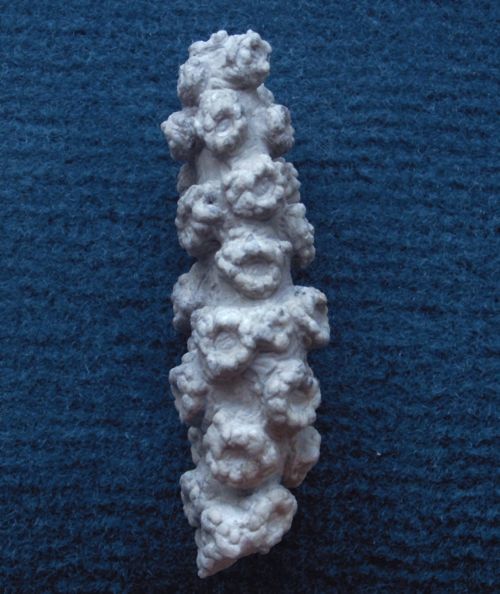
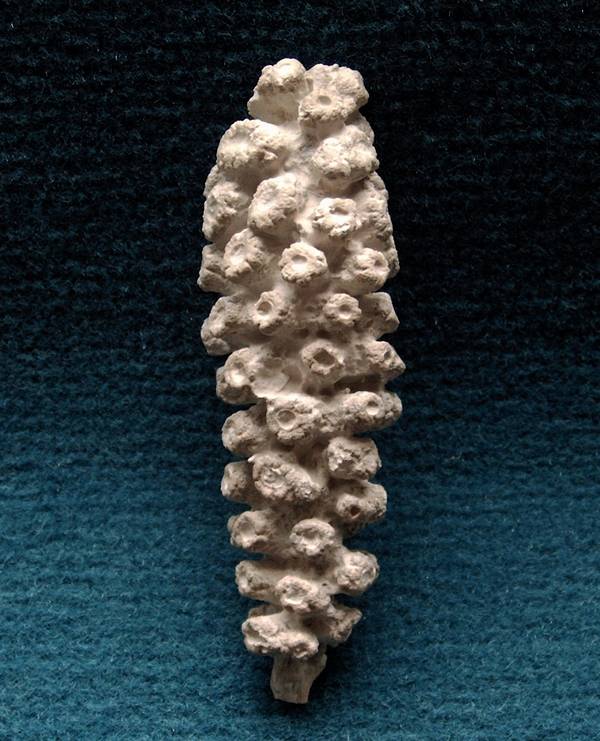
To the author's knowledge, a complete specimen of Polyblastidium racemosum has not been found before. The two fragments shown to the left are more typical of what one can expect to find.

Photomicrograph of etched specimen of Polyblastidium racemosum, showing a single bud.
The bud surface is formed by a porpous, opaline membrane which also shows some appendices around the osculum.

Oblique view into a bud of Polyblastidium racemosum.
The siliceous membrane of the bud surface shows broad ridges and narrow grooves. The ridges seem to correspond to epirhyses underneath the membrane, starting inside the bud cavity and ending blind near the periphery of the bud. The grooves apparently correspond to intercalated aporhyses exiting on the sides of the buds.

Photomicrograph showing details of the lychniskide skeleton inside the buds.
Notice the tiny spines covering the lychnisk arms. In other places of the same specimen the lychnisks have rather smooth surfaces (see image below).
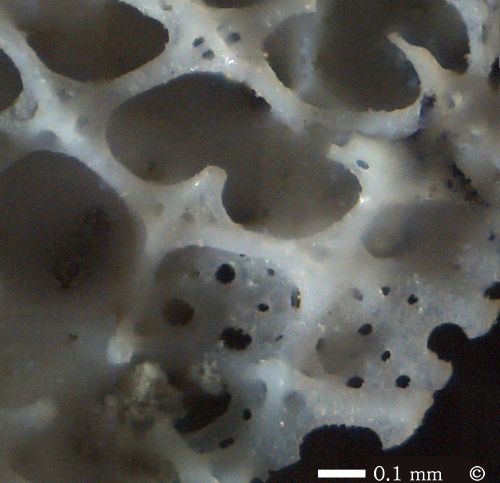
Photomicrograph of Polyblastidium racemosum, showing well developped lychnisks. Near the inside of the bud surface, the lychnisks grade into the dermal membrane.
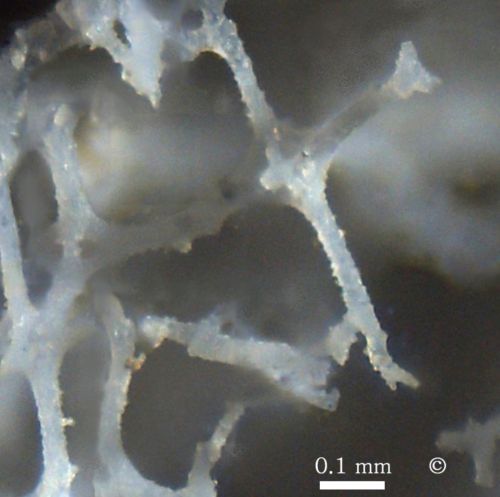
Photomicrograph of Polyblastidium racemosum, showing lychnisks with unmated arms pointing into an (?) aporhysal canal.